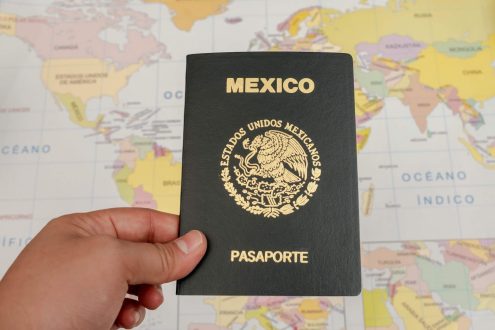This is another post in our series on how to understand and interpret identification numbers in global investigations. Today we’re focused on the Mexican National ID Number (Clave Única de Registro de Población). See our previous post on the Unique Master Citizen Number (JMBG) in the Balkans here.
When investigating financial crime and drug trafficking in Mexico, confirming a person’s identity is one of the greatest challenges an analyst faces. In a country where duplicate names are common and names are often shortened, disambiguating an individual from others with the same name can cause analysts to second-guess their findings.
The National ID Number or CURP (Clave Única de Registro de Población) is one of the most common ID numbers for people in Mexico. It is similar in use to the U.S. Social Security Number, but unlike the SSN, it is algorithmically generated using the person’s full legal name and personal information. Understanding Mexican ID Number construction can help reveal key information about individuals and allow analysts to easily identify false ID numbers.
Naming Conventions in Latin America
Before we discuss the structure of CURPs, it is essential to talk about naming conventions in Latin America. In Spanish-speaking jurisdictions, names are typically comprised of three parts.
A person’s given name, also known as a first name, is either a single name, such as Alejandra, or more commonly a compound name with two or more names, such as Francisco Enrique.
The given name is followed by the paternal surname, then the maternal surname. Paternal and material surnames can be compound, but this is less common.
For example, let’s look at professional Mexican soccer player Rafael Márquez Álvarez. The U.S. Department of the Treasury sanctioned him in 2017 for serving as a frontman and holding assets for long-time drug kingpin Raúl Flores Hernández, the leader of the Flores Drug Trafficking Organization.
If we break down his name into its three parts, his given name is Rafael, his paternal surname is Márquez, and his maternal surname is Álvarez.
Deciphering the Mexican National ID Number
The Mexican National ID Number (CURP) is an eighteen character alphanumeric code. It is structured as follows:
- Four letters from the person’s legal name: – First letter of the paternal surname – First internal vowel of the paternal surname – First letter of the maternal surname – First letter of the given name
- Six numbers that are the person’s date of birth in YYMMDD format
- One letter describing the person’s gender: “H” for male (hombre) and “M” for female (mujer)
- Two letters that are the two-letter state abbreviation for the state where the person was born; if the person was born outside of Mexico, the abbreviation “NE” will be used for Nacido en el Extranjero (born abroad)
- Three letters from the person’s legal name: – First internal consonant of the paternal surname – First internal consonant of the maternal surname – First internal consonant of the given name
- One character to avoid duplicate CURPs among people who have similar names, places of birth, and dates of birth; the character is a number that ranges from zero to nine for people born before 2000 and a letter from A to Z for people born since 2000
- One character that is a checksum
For help with tricky naming situations and exceptions to the standard CURP rules, check out our extended Knowledge Center article on the CURP.
Example: Rafael Márquez Álvarez‘s CURP
According to the U.S. Department of the Treasury, Rafael Márquez Álvarez’s CURP is MAAR790213HMNRLF03. Based on the rules above, we can see that:
- The letters for characters 1 through 4 and 14 through 16 are pulled from his legal name – Characters 5 through 10 (790213) are his birthday, February 13, 1979 – Character 11 (H) is his gender, male – Characters 12 and 13 are the two-letter abbreviation for the state where he was born, Michoacán de Ocampo
The Analytic Value of the CURP
The CURP, which is sometimes provided on corporate records for shareholders and legal representatives, can provide a wealth of information to an analyst. It’s possible to derive a person’s date of birth, gender, and place of birth from the CURP if it is the only piece of information about an individual that is available.
In addition, in cases where public records have reported multiple unique dates of birth for an individual, analysts can have more confidence in the date of birth that matches the CURP.
For a more detailed look at Mexican ID numbers, check out our Knowledge Center articles on Latin America and the Caribbean.
Global public records data, like the data we used to power this research, is available through Sayari Search. If you’re curious about how this data could drive insights for your team, please reach out here.



